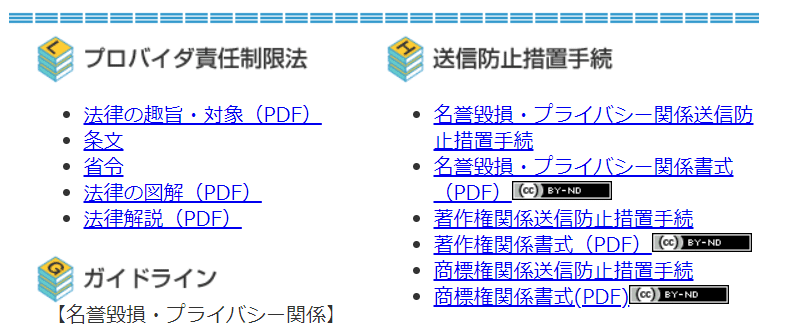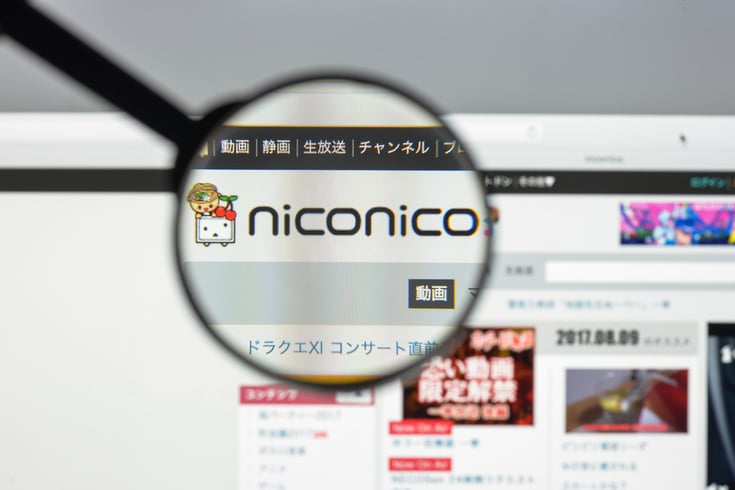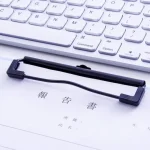What is the Method of Writing a Request for Transmission Prevention Measures under the Japanese Provider Liability Limitation Act?

One of the methods to remove posted articles is a procedure called a transmission prevention measure request based on the Japanese Provider Liability Limitation Act. This is a request to remove illegal web pages that infringe on defamation or privacy rights, without the need for court intervention, and is made in writing.
While a transmission prevention measure request to the provider may not always yield the expected results, it can be considered a powerful tool. In this article, we will explain the procedure for a transmission prevention measure request and the request letter to be sent to the provider.
Three Methods for Article Deletion Requests

Typically, there are three methods to request the deletion of an article:
- Requesting deletion from the site operator or server operator
- Requesting transmission prevention measures from the site operator or server operator
- Requesting deletion through the court
The second method, “Requesting transmission prevention measures from the site operator or server operator,” is a formal request based on the law, specifically the “Japanese Act on the Limitation of Liability for Damages of Specified Telecommunications Service Providers and the Right to Demand Disclosure of Identification Information of the Senders,” commonly known as the “Japanese Provider Liability Limitation Act.” This law allows you to request the deletion of an article from the site operator or server operator.
Procedure for Transmission Prevention Measures
In order to request transmission prevention measures, you must send a request form to the provider. Only the person whose rights have been infringed and lawyers, due to the legal nature of the case, can make this request. According to Article 72 of the Japanese Attorney Act, non-lawyers cannot handle legal matters as part of their job. Therefore, if a defamation countermeasure provider or similar entity acts on behalf of the request for transmission prevention measures, it will be considered unauthorized practice of law.
https://monolith.law/reputation/hiben-koui[ja]
Sending the Transmission Prevention Measures Request Form

Once the provider accepts the complete set of transmission prevention measures request forms, they will review the “information infringing rights” that has been applied for. Information posted on the internet is basically guaranteed freedom of expression, so not everything can be deleted just because the victim wishes it. Whether the requested article deletion is appropriate or not is determined by the provider.
Confirmation of Intent (Inquiry) by the Provider
The provider who received the request will, in principle, notify the sender that there has been a request to take transmission prevention measures, and notify them of the infringement information provided by the applicant, etc., and conduct a confirmation of intent (inquiry) asking “Is it okay to delete this article?”. However, this confirmation process is not taken when the sender cannot be identified.
After this confirmation of intent reaches the sender, unless they rebut in a prescribed manner within 7 days (within 2 days for revenge porn), the provider can take transmission prevention measures such as deletion in accordance with the purpose of Article 3, Paragraph 2, Item 2 of the Japanese Provider Liability Limitation Act.
Decision on Article Deletion
If the sender makes a “declaration that they do not agree to take transmission prevention measures” and a reasonable rebuttal is made as the reason, and it is judged that there is “no reasonable reason to recognize that they could know that the rights of others are being infringed” considering the rebuttal, etc., it is considered that the provider can avoid liability for damages even if they did not take transmission prevention measures against the information for which the request was received.
On the other hand, if the sender makes a “declaration that they do not agree to take transmission prevention measures” but does not provide a reason, whether the provider can take transmission prevention measures or not is considered to be the same as when they do not go through the inquiry process.
Also, even if there is a rebuttal after going through the inquiry process, if the rebuttal is unreasonable, etc. (for example, if they admit that it is false), and the provider can confirm that it falls under “when there is a reasonable reason to recognize that they could know that the rights of others are being infringed” (Article 3, Paragraph 1, Item 2) or “when there was a reasonable reason to believe that the rights of others were being unjustly infringed” (Article 3, Paragraph 2, Item 1), it is considered that they should delete it.
It is not guaranteed that they will delete it just by sending the request form. Whether it constitutes an infringement of rights is determined by the provider, and the Japanese Provider Liability Limitation Act does not even stipulate an obligation to respond to requests for transmission prevention measures. In other words, the decision on whether or not to delete the article is ultimately left to the provider, and the reality is that many providers, in their caution, maintain the status quo, i.e., they often do not delete articles.
How to Write a Request for Transmission Prevention Measures

How to Download the Request for Transmission Prevention Measures
When requesting transmission prevention measures, you create a request form. While some providers may have their own specific formats, generally, you will use the format created by the General Incorporated Association Telecom Services Association (TELESA).
TELESA has established guidelines for the Japanese Provider Liability Limitation Act and has also published formats commonly referred to as “TELESA formats”. As the operations of each provider are generally in line with these guidelines, we will explain using the “TELESA format”.
Go to the “Provider Liability Limitation Act Related Information Website” and use the “Defamation/Privacy Related Format (PDF)” under “Transmission Prevention Measures Procedure”.

Note that in the case of copyright-related issues, use the “Copyright-Related Format (PDF)”, and in the case of trademark-related issues, use the “Trademark-Related Format (PDF)”.
The Claimant of Infringed Rights
First, write down the address, name, and contact information (phone number)(e-mail address) of the “claimant of infringed rights”. Next to the name, stamp your seal. Some providers may require you to attach a seal certificate, so it is advisable to use your registered seal.
If a lawyer is acting as an agent, the lawyer’s name and seal are stamped below this.
Location of the Post
Write down the URL and other information necessary for identification (name of the bulletin board, location of the post within the bulletin board, date and time of the post, file name, etc.). The purpose is to make it easy for the provider to identify the relevant article, so if there is a post number, include that as well.
Information Posted
In the section for posted information, write down what kind of content is actually posted. For example, “My real name and home phone number were posted with a message saying, ‘Waiting for contact from those who wish to date,’ as if I were soliciting an affair.”
If there are many items or if they do not fit within the frame, it is a good idea to attach a screenshot of the relevant post and write “as per the attached document”.
In cases of defamation, it may be difficult to judge whether a post is defamatory without reading the context, so in such cases, attach documents related to the posts before and after the relevant article.
The Rights Claimed to be Infringed
Write down what rights have actually been infringed. It is often an infringement of the right to honor or privacy. If it is a corporation or store, there may be an infringement of business rights, but simply write “defamation, invasion of privacy”.
Reasons for Claiming Infringement of Rights (Situation of Damage, etc.)
Write down the course of what actually happened. For example, “On the internet, I only use a handle name and keep my real name and home phone number private. Against my will, they were made public, and I received about XX proposals for dating and obscene prank calls, causing me great mental distress.”
Whether it is Acceptable to Disclose the Name to the Sender
Finally, it says, “If it is acceptable to disclose your name to the sender, please mark ○ on the left side. If there is no ○ mark, it is assumed that you do not agree to disclose your name.”
In the confirmation (inquiry), items 2 to 5 above are communicated to the sender as they are, but the name, etc. of the person requesting the transmission prevention measures is not disclosed as a rule, as there may be a reasonable reason to keep the name, etc. hidden in the relationship between the applicant and the sender (such as when a photo is posted and the sender does not know the name of the applicant).
Of course, only the person himself or his agent can apply, so in cases of defamation, invasion of privacy, and other rights infringements, the name of the applicant can naturally be guessed by the sender by the fact that the inquiry procedure has been conducted, but this is considered unavoidable.
Benefits of Requesting Transmission Prevention Measures

As I have mentioned before, whether the requested article deletion is appropriate or not is determined by the provider, and the provider is not obligated to comply with the request for transmission prevention measures.
The Japanese Provider Liability Limitation Act sets the standard for whether the provider’s response to rights-infringing information is appropriate or not, based on “whether it falls under the case where liability for damages is limited by Article 3 of the Provider Liability Limitation Act, if the provider has taken or has not taken transmission prevention measures”. It simply organizes “what kind of cases exist where the provider does not bear liability for damages to the applicant even if it did not take transmission prevention measures (Article 3, Paragraph 1)” and “what kind of cases exist where the provider does not bear liability for damages to the sender when it took transmission prevention measures in response to a request from the applicant or others (Article 3, Paragraph 2)”.
Therefore, many people may think that requesting transmission prevention measures is not very meaningful, but there are other benefits to requesting transmission prevention measures. It is to convey to the sender that the victim has the intention to take legal action against the defamatory post.
The provider will confirm (inquire) with the sender whether to delete the post or not, but for the sender, they will suddenly receive an inquiry about deletion from the provider. At this stage, some senders may recognize for the first time that their post may be defamatory and refrain from posting. Even if they were defaming with malice, the arrival of the inquiry can make them realize that the victim is serious about dealing with it, and it can be expected that they will hesitate to defame in the future.
Especially when a lawyer is hired as a representative, it is not the case that they will give up and end if the article deletion is not approved, but they will proceed to provisional disposition of article deletion, and there is a high possibility of a lawsuit, which will make not only the provider but also the sender aware of this.
However, unlike the disclosure of sender information, the request for transmission prevention measures is likely to be responded to as desired, but it takes at least about a month to get a response, so many people choose to go for provisional disposition of article deletion from the beginning without using this.
https://monolith.law/reputation/provisional-disposition[ja]
Summary
Creating a request for transmission prevention measures is not particularly difficult, and can be done even by those with little legal knowledge. However, if there are any deficiencies, you will be queried by the provider each time, and you must respond to these queries. This not only takes extra time, but also reduces the likelihood of your request being accepted.
Furthermore, if your request for transmission prevention measures is not approved, you will need to apply for a provisional disposition to delete the article. In such cases, it is advisable to consult with a lawyer from the time of creating the request for transmission prevention measures, as this allows for a swift transition.
Category: Internet





















